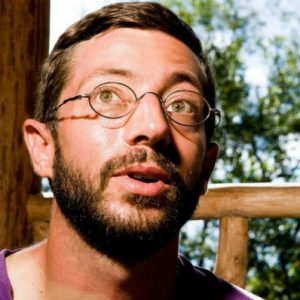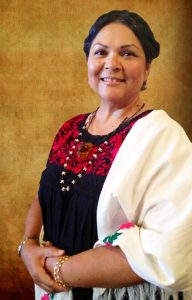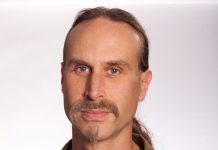“You don’t find light by avoiding the darkness.”
― S. Kelley Harrell, modern shaman
As psychedelics in general, and ayahuasca specifically, gain momentum in the Western ethos, people are increasingly turning to entheogenic substances as a means to rekindle spiritual connections as well as a way of enhancing personal growth. In that sense, especially with the plant ayahuasca, a modern sort of pilgrimage has evolved.
Because it blends elements of both inner and outer travel, “ayahuasca tourism” seems an appropriate name for this phenomenon. Ayahuasca tourism is steadily gaining popularity across the globe. As Ville Mantere writes in his master’s thesis, Westerners in search of the legendary potion Ayahuasca travel in the borderland between tourism and pilgrimage, “In the last five decades, the number of global travelers has risen fifteen-fold, with one billion international tourists traveling in 2012.”
This phenomenon is more than people tripping out and having hallucinations on DMT, the active ingredient in ayahuasca. Adam Pallay, a writer that specializes in cannabis education and spirituality, puts his finger on it, saying, “As well as providing an opportunity to consume psychedelic compounds, the ayahuasca experience is also defined by the ceremony that surrounds it. These ancient liturgies are designed to provide the set and setting of the ayahuasca experience.”
At the heart of the ayahuasca experience lies the shaman, part tour guide, part spiritual teacher, part healer. Without the shaman, known as a curander/a in Central and South American countries, the effects of an ayahuasca experience may be limited and transitory in nature, which ultimately contradicts the inherent value of ingesting ayahuasca: a profound and deeply transformational journey.
Carlos Tanner, a curandero who trained under the guidance of an expert mentor in Peru explains:
“While the ingestion of the medicine Ayahuasca is obviously a central component to the Ayahuasca ceremony, there are a variety of other aspects that contribute to the effectiveness of the ceremony. The majority of these aspects involve the work of the curandero to form deep relationships with spirits, learning from these plant teachers as well as from their ancestral teachers, and utilizing this body of wisdom to enhance the healing power of the ceremony experience. The curandero and ceremony are as inseparable as the concert and performer, as the surgery and surgeon, which is why drinking Ayahuasca in a ceremony led by a curandero is better than drinking without a ceremony.”

But ayahuasca tourists need to be particularly careful about who they select to be their shaman, or curandero. As Tanner warns, “There are risks to sitting in ayahuasca ceremonies with facilitators who haven’t been trained by a traditional curandero! The biggest risk is the facilitator not knowing how to help people through difficult experiences – sometimes traditional methods are the most effective at reducing suffering. Additionally, while inexperienced facilitators may be less likely to take you to deep places, if you do end up having a challenging experience, they will be less well equipped to help you through them. Experienced curanderos are both more likely to take you to challenging places, but also more likely to take care of you and make sure you leave without feeling traumatized.”
There is a broad skill set a curandero needs to be successful, a combination of modern tenets of psychological counseling harmoniously blended with ancient forms of wisdom. As Grace Alvarez Sesna, a Mexican curandera writes, curander/os/as bring “a thoughtful inclusion of traditional Indigenous healing practices alongside a doctor’s conventional medical treatments, as may be appropriate” in order “to address the whole person: body, emotions, mind, relationships, and spirit.”
A legitimate curandero, or shaman, is a master of synthesizing herbal knowledge, ancient folk wisdom, and spiritual guidance. In this sense, the practice of shamanism is intimately linked to culture and the mythology that imbues them with a sense of spiritual purpose.

The anthropologist Jeffrey Vadala contends that “most shamans have extensive knowledge of local mythological histories, they can recite mythological stories for their patients even during ritual treatments and ceremonies in which both the shaman and their patients are in an altered state of consciousness.”
Vadala also believes in the transformative powers of shamans, stating, “The shaman can poignantly highlight important sacred places and historical periods for their subjects. For these treatments to be meaningful and affective, the shaman must communicate how the patients’ issues and ailments exist in relation to their given context of local spiritual events and understanding of the unfolding cosmos.”
Of course, an altered state of consciousness (ASC) is central to not only an ayahuasca experience but part of the core knowledge that a traditionally oriented shaman brings to an ayahuasca journey. An experienced shaman not only has an intimate understanding of the ayahuasca experience but has the ability to shift into spiritual dimensions as a means to bring enlightenment and change.
For a shaman, spirituality is the essence of their being and they have rigorously trained for this role in their society. Pallay states, “the primary purpose of the shaman is to be sensitive to the spiritual flow of the ceremony. Similar to sacraments from other religious traditions, shamans believe that their sacrament embodies a spirit, and it is their job to facilitate a space for people to encounter that spirit.”
As Michael Winkelman, Director of the Ethnographic Field School, Ensenada, Mexico, and Senior Lecturer in the Department of Anthropology at Arizona State University profers: “Early in life, as part of their training to be shamans, they undertook deliberate activities to enter ASC and develop personal relationships with the spirits. Shamans’ development involves a death-and-rebirth experience and the acquisition of animal allies that provide powers to heal, divine, diagnose and prophesize. . .”
The current reality is that people seek to be ayahuasca tourists for a variety of reasons. Whether they are from the United States or Europe, people seek out the ayahuasca experience to address something that is lacking or amiss in their lives.
Ann Babe, a tourism writer for Vice magazine, argues, “Ayahuasca attracts Westerners to the Amazon for all kinds of reasons. Some are searching for their next big spiritual awakening; some want to be healed of serious illnesses and addictions. Others try it to recover from debilitating grief, to combat anxiety, or just to get high on the holy grail of drugs.”
Regardless of your reason to try ayahuasca, you should keep a couple of things in mind. First, respect the cultural and spiritual significance of what a shaman-led ayahuasca experience offers. Done correctly, you are in essence receiving an archetypal sacrament, one that contains hundreds if not thousands of years of wisdom attached to it, so have the right frame of mind going into it.
Second, take the preparation recommendations, such as diet and other health guidelines, seriously. These can either enhance or detract, spending on your commitment. Moreover, do your research in a methodical manner. Like any other worthwhile endeavor, especially one that can be wholly transformative, finding the right shaman or curandera/o is crucial. A good place to start is this webpage from EntheoNation.
Finally, have an open mind and heart to the possibilities that could exist as a result of your experience. Try to be present in the moment, to be one with the experiences. It is this sense of connectedness that will hopefully endure, even as your ayahuasca high slips away. As Will Adcock, author of Shamanism: Rituals For Spiritual Journeying And Creating Sacred Space puts it,“Humans are a part of creation and shamanism is our way of connecting with the whole.”






